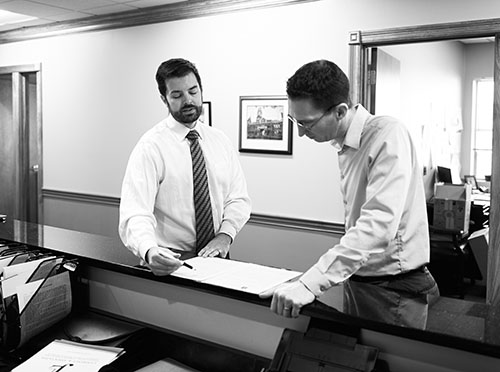What Evidence Is Needed to Convict a Hit-and-Run?
Posted on Monday, May 29th, 2023 at 6:13 pm

In the aftermath of a hit-and-run incident, drivers often grapple with fear, confusion, and a sense of injustice. If you’ve recently experienced such a traumatic event, you might wonder, “What now?” As an Ohio resident, you have legal avenues to seek accountability and justice. However, the success of your claim hinges on understanding the type of evidence needed to convict a hit-and-run offender.
In this blog, our Ohio car accident lawyers demystify the legal requirements surrounding hit-and-run cases. Armed with this knowledge and help from an experienced attorney, you’ll be better prepared to navigate this complex process and stand up for your rights. Remember, you are not alone, and your pursuit of justice is both important and achievable.
Ohio’s Hit-and-Run Laws
Ohio’s hit-and-run laws are clearly outlined in the Ohio Revised Code (ORC). Specifically, this law and a second law specify the duties of drivers in the event of an accident.
According to the ORC, when an accident occurs on public roads or highways, the driver must immediately stop and remain at the scene. This requirement applies to all accidents, including those involving unattended property or a pedestrian. The driver must provide their name, address, and vehicle registration number, as well as show their driver’s license if asked.
If the collision results in injury or death, the driver must also provide reasonable assistance to the injured party, including arranging for or providing transportation to a medical facility if necessary or if an injured party asks for such assistance.
Failing to stop after an accident is a serious offense in Ohio, though the penalties vary depending on the severity of the accident. For example, if the incident led to property damage, it’s classified as a first-degree misdemeanor. However, if the accident resulted in injury or death, the charges can escalate to a felony of the fifth or third degree, respectively.
Understanding these laws is crucial for any individual involved in a hit-and-run incident, whether you’re seeking justice or simply aiming to comprehend Ohio’s traffic regulations better.
How Do Police Handle Ohio Hit-and-Run Cases?
A police investigation into a hit-and-run typically involves several key steps. It’s a process aimed at gathering as much evidence as possible to identify the person who fled the scene. Here are the basic steps that police usually take after a hit-and-run:
- Scene Examination: The police will visit the accident scene to gather physical evidence. This could include things like car parts left behind, paint chips, or skid marks. They’ll also look for any potential witnesses who may have seen what happened.
- Witness Interviews: If there are witnesses, police officers will interview them to gather more information about the incident. Witnesses might provide crucial details such as the car’s make and model, the driver’s appearance, or even a partial license plate number.
- Surveillance Footage Review: If the hit-and-run occurred in a place where surveillance cameras are installed, such as near a store or traffic intersection, the police will review the footage for additional clues about the incident.
- Vehicle Search: Using the information gathered from the scene, witnesses, and surveillance footage, the police will try to locate the vehicle involved in the hit-and-run.
- Suspect Interrogation: If the police can find the vehicle from the scene, they will question the vehicle’s owner. Depending on the evidence, they may arrest the driver.
Remember, while the police play an essential role in investigating a hit-and-run, you can help by providing as much detail as possible about the incident and any potential evidence.
Common Evidence in Hit-and-Run Investigations
 Some of the evidence the police look at in hit-and-run investigations includes:
Some of the evidence the police look at in hit-and-run investigations includes:
- Photographic Evidence
- Surveillance Footage
- Witness Statements
- Physical Evidence (debris at the scene, paint chips, etc.)
- Police Reports
- Medical Records
- Vehicle Damage Reports
- Cellphone Data
Recovering Compensation for an Ohio Hit-and-Run
In Ohio, drivers involved in hit-and-run crashes have two main avenues to seek compensation for damages and injuries. If the police can find the at-fault driver, you can file a personal injury claim against them. In this claim, you can seek compensation for medical expenses, lost wages, pain and suffering, and other damages related to the accident.
In situations where the at-fault driver can’t be identified, or if they’re uninsured, your own insurance policy may come into play if you have Uninsured Motorist (UM) coverage. If the police can’t find the other driver, your insurance company will essentially treat the situation as if the driver did not have insurance. UM coverage typically pays for your medical expenses, lost wages, and other damages up to the policy’s limits. It’s important to note that insurance companies have to offer UM coverage in Ohio, but you can opt-out if you let the insurer know in writing. If you didn’t opt out, you likely have this coverage.
The personal injury lawyers at Lawrence & Associates Accident and Injury Lawyers, LLC want to help you after a hit-and-run, no matter whether the police find the other driver. We can take care of an uninsured motorist claim or personal injury lawsuit while you focus on your recovery. Call (513) 351-5997 today or fill out our contact form for a consultation.
Related Posts:










